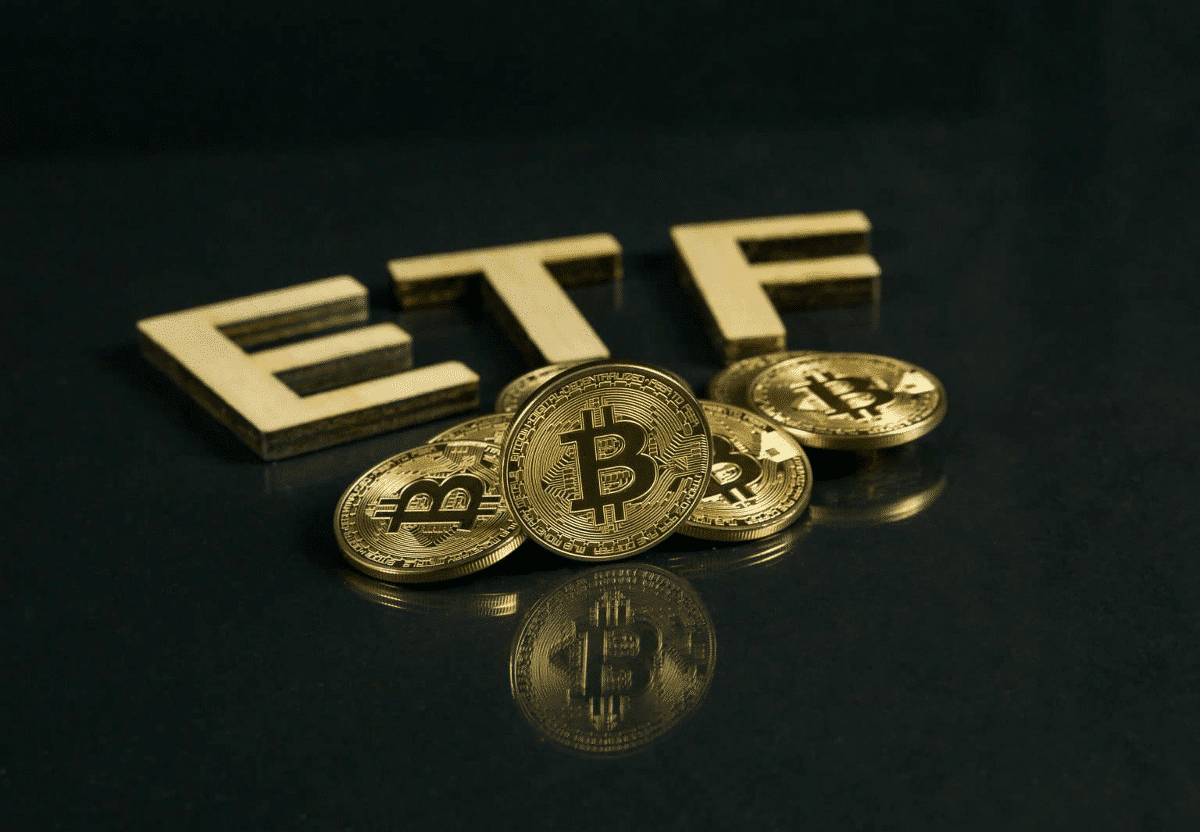TVL is growing rapidly, community activities are ongoing, will the Sui ecosystem experience an explosion?
TVL's Rapid Growth and Ongoing Community Activities Will the Sui Ecosystem See an Explosive Rise?Author: Deep Tide TechFlow
Bitcoin surged to $44,000, and in the jubilant atmosphere of the bullish return, the TVL rankings of public chains are quietly undergoing some changes.
As a newcomer to the public chain launched in a bear market, Sui is steadily climbing the TVL rankings.
On December 15th, Sui’s Total Value Locked (TVL) exceeded $150 million. In the past four months, TVL has grown more than 10 times and continues to grow at a high speed.
- This USDT is not the same USDT
- Stablecoins are recognized in Asia, but obstacles remain.
- Seven Hot DePIN Projects Reviewed Solana Leads the Way, with an Average Return of Over 6x
After the mainnet was officially released, Sui was once controversial. On the one hand, the token price was weak, and on the other hand, like all new chains, there were varying qualities of ecological projects, with speculative projects parasitic, trying to cater to the new narrative and make quick money.
In the early narrative, Sui positioned itself as “one of the most attractive public chains for Web3 game developers”. After all, its underlying design architecture is naturally suitable for developing large-scale blockchain games:
NFT data stored on-chain: Game NFT metadata on Sui chain is not stored on centralized servers or IPFS systems, but in the form of “Object” code layers on the chain, controlled by smart contracts. All NFT metadata can be queried on-chain, achieving maximum decentralization.
Dynamic attribute update for NFT: Sui has a unique design for dynamic attribute NFTs. The NFT smart contract on Sui chain consists of two parts: “Fields” and “Dynamic Fields”. The former includes the name, image URL, creator, etc. of the NFT, which cannot be changed; some of the attributes in the latter can be changed after being authorized by players. This facilitates the upgrading and forging of in-game NFTs.
Games, as the most easily viral scene to acquire mass users, are naturally supported and encouraged by the Sui team. Therefore, the early label given to Sui was “game/NFT public chain”.
Perhaps this is a misinterpretation.
In my opinion, it is wishful thinking for any public chain ecosystem to try to bypass DeFi and directly build a large on-chain NFT/game ecosystem.
Because DeFi is the infrastructure of all public chains.
Whether it is pure PFP NFTs, NFT props in games, or tokens in games, they all have asset properties. All assets have certain financial attributes and can be traded and used as collateral for borrowing. All of this relies on DeFi infrastructure and liquidity, and often, the prosperity of NFTs requires the leverage of DeFi, which is why we had DeFi Summer before the NFT boom.
Sui has indeed made efforts to attract game developers in the early stages, but it did not define itself as a “gaming chain.” Shortly after the mainnet went live, it adopted the local liquidity layer DeepBook, which supports DeFi applications through its built-in liquidity pool, ensuring that Sui is also a top-tier support platform for DeFi.
The 10-fold increase in Sui’s TVL in four months is the result of its final efforts, and Sui’s DeFi ecosystem has gradually grown.
Sui’s DeFi Ecosystem
According to DefiLlama data, Sui currently has over 9 projects with a TVL exceeding $5 million, mainly concentrated in the decentralized exchange (DEX) and lending platform categories, with 7 projects having a TVL far exceeding $10 million.
Cetus is undoubtedly the “Sui King.” It is a decentralized trading platform based on Uniswap V3’s concentrated liquidity algorithm. Users can permissionlessly build token liquidity pools on Cetus and choose to provide liquidity to the pool within a custom price range. In addition, Cetus also offers a series of auxiliary features and products such as Fee-based farming and LaunchLianGuaid.
Since the third quarter, Cetus has experienced explosive growth in various data. TVL has risen from $11 million to over $53 million, and the cumulative trading volume has recently surpassed $1 billion.
There are two main factors behind the rapid growth of the protocol. First, emerging projects and new assets entering the Sui ecosystem have brought new DeFi use cases and scenarios, enriching the applications and stimulating the trading demand on DEXs.
Second, the trading demand for SUI and ecosystem assets themselves is continuously increasing, and as the leading DEX within the ecosystem, Cetus naturally captures a large portion of this traffic.
Currently, Cetus has issued its Token and is listed on top CEX platforms such as OKX.
Other leading DeFi protocols on Sui include BlueFin, FlowX Finance, Navi, KriyaDEX, Scallop Lend, and Aftermath Finance.
BlueFin (formerly Firefly, dTrade) is a decentralized perpetual contract protocol based on off-chain order books, which has received investments from top institutions such as Polychain and Wintermute.
Bluefin v2, built on Sui, offers scalability and a wallet-less trading experience comparable to centralized exchanges.
BlueFin’s goal is to provide a familiar CEX experience in DeFi. In their view, this can only be achieved on Sui.
Unlike other L1s that execute transactions in parallel, Sui allows for parallel ordering and execution, achieving throughput of over 125,000 transactions per second, and network availability is not limited by other applications and users.
Furthermore, to lower the user threshold, BlueFin has integrated ZKLogin, which is a native feature of Sui, allowing users to use existing Web2 identity verification, such as Google, to log in to Web3 applications, and protect data privacy with zero-knowledge proof technology.
Bluefin’s average daily trading volume in December was $103 million, and its market share in the DEX track of the Sui ecosystem exceeded 80%. The gas fee for version 2 is less than $0.005 and is currently fully supported by the Bluefin Foundation.
FlowX Finance, a DEX built on Sui that revolves around the ecosystem, has introduced unique features such as analytics, Farming As A Service, real-time price charts, and notification bots.
The project has received funding from the “Sui Foundation” and won the community’s most popular project award at the “Sui x Kucoin Hackathon.” On November 30th, the project completed the community IDO round to launch their token with a total value of $940,000. Participants in the protocol are expected to receive airdrops by holding NFTs as evidence of early protocol usage.
Navi Protocol is a lending protocol in the Sui ecosystem, launched on the mainnet on July 27th. Currently, TVL has reached 35 million (including lending), accumulated 740,000 users, and won first place in the DeFi field in the SUI x Kucoin Summer Hackathon.
On December 8th, NAVI Protocol announced the launch of the NAVI Bonus activity, where by staking SUI or USDC to NAVI Protocol on OKX DeFi, users can enjoy exclusive additional up to 10% APY.
Navi Protocol has received investment support from Sui’s official institution, Mysten Labs, Coin98, Vietnam’s largest crypto wallet, and Gate, a trading platform. Especially in Vietnam, it has extensive community resources and users.
KriyaDEX is the first derivatives exchange on Sui and has received sponsorship from the Sui Foundation, including KriyaSwap (a spot AMM with a native bridge) and Kriya DEX (an order book-based perpetual DEX), supporting perpetual contracts, futures, and options, with leverage of up to 20x.
KriyaDEX also provides an opportunity for liquidity providers (LPs) to earn rewards, with a reward pool that includes not only Sui but also 1,000,000 $KRIYA tokens.
Scallop is a comprehensive currency market in the Sui ecosystem, providing lending, flash loans, trading UI tools, coin swaps, and cross-chain bridges, as well as SDKs for professional traders. It emphasizes security, composability, and comprehensive support.
Its distinctive feature is its unique lending model, which includes a secured collateral pool, a market token, a three-line dynamic interest rate model, and multiple oracle strategies.
Aftermath Finance is a multifunctional DeFi product that aims to become the liquidity and trading hub of Sui. It is the winner of the Sui Builder Hero award and the first-place winner of the Sui Liquid Stake hackathon.
On one hand, Aftermath is a trading platform that allows the creation of liquidity pools with two or more tokens and flexible weights. These pools can be used for low liquidity tokens, custom LP pairs, highly customized pools for bridging newly launched tokens, or for creating decentralized index/portfolio management systems.
In addition, Aftermath has also created a DEX aggregator that integrates with all protocols on Sui. This aggregator can find the best trading path for any two assets.
Recently, Aftermath has also launched their own liquidity staking token, afSUI. Users can stake SUI to earn afSUI and use it throughout the Sui DeFi ecosystem. Initial use cases include protocols like Cetus, Scallop, and Bucket Finance.
Currently, afSUI is the largest liquidity staking token on Sui, with a total of 1,559,463 SUI staked and converted into afSUI.
It is worth noting that, apart from Cetus, several other projects have not issued tokens, so there is an opportunity to receive airdrops.
Looking at the above projects, most of them come from Sui hackathons and have received funding from the Sui Foundation. They can be considered as the real deal.
Tracing back the origin of the code, Move, this new language was initially developed by Facebook for the Diem blockchain, with the initial vision of building new infrastructure for global finance. Therefore, from its inception, Move was designed as a language for running digital assets, known for its high TPS and suitability for large-scale commercial applications.
After the demise of Diem, Sam Blackshear, the father of the Move language, became the CTO of Sui and made improvements to Sui based on the original MOVE language.
Sui has a dual consensus model – dependent transactions are ordered and processed sequentially, while independent transactions are executed in parallel. This gives the network an advantage in transaction processing, allowing it to scale TPS at a much higher speed than other blockchains.
As a result, Sui validation nodes do not face the same computational pressure as Ethereum or Solana. Transactions like massive NFT minting and DeFi-related activities are separated, bypassing the consensus. This provides a less congested but stable environment for the release of validation nodes and consensus resources, facilitating the processing and deployment of DeFi transactions.
Therefore, from a technical perspective, Sui is not only suitable for building gaming and NFT ecosystems but also a paradise for DeFi developers.
The Dilemma and Future of New Public Chains
From various news updates, it seems that the Sui team is one of the busiest public chain ecosystems this year.
On one hand, they are debunking and handling various public opinions, and on the other hand, they are hosting hackathons and various events around the world.
In March, Sui hosted Builder House in Vietnam;
In April, Sui hosted Builder House in Hong Kong;
In May, Sui and KuCoin Labs jointly launched the Summer Hackathon;
In June, Sui hosted the Builder House in Kyoto;
In June, Sui hosted the Builder House in Seoul;
In July, Sui hosted the Builder House in Paris;
In August, Sui hosted the Liquidity Staking Hackathon;
In August, Sui hosted the Hacker House in San Francisco;
In September, Sui hosted the Builder House in Singapore;
In November, Sui hosted Sui Devconnect in Turkey;
…
A large number of hackathons and Builder Houses all have one purpose, to attract more developers to Sui for development and construction. This is currently Sui’s and even Aptos’ dilemma: as a new language, MOVE lacks developers.
Compared to other EVM-compatible chains that use Solidity or Solana that uses Rust, MOVE language always has a certain learning and migration cost, which brings us back to a classic problem: as a new public chain ecosystem, how to attract new developers to join?
Based on the experience of previous bull markets, the fastest way is the wealth effect. When the price rises and capital is willing to continue investing in the ecosystem, developers driven by financial incentives will actively enter. However, this approach can only bring short-lived glory.
Price should be the result of ecosystem development, but when it becomes the reason driving the development of the ecosystem, it will attract a large number of speculators. Once the price is difficult to sustain, the ecosystem may collapse and disperse. In the end, we still have to go back to school – honestly build the developer community, do developer education, establish trust and foster loyalty. This will be a long journey.
I once had a conversation with a new developer of the Move language and asked why they didn’t choose the mature Solidity for development?
His answer was simple but powerful, “Looking at the long-term timeline, what the future of blockchain needs is a 100x expansion, not just a 10x expansion brought by L2. There is a chance for new languages and new L1.”
Sui is undergoing the metamorphosis of a new public chain, and this process inevitably comes with pains. It requires balancing with price, token unlocking, market cycles, and community opinion until reaching the tipping point of transformation and embarking on a positive cycle flywheel where the ecosystem and the price mutually promote each other.
DeFi construction has achieved results. I wish Sui, on its metamorphosis journey, a breakthrough soon.
We will continue to update Blocking; if you have any questions or suggestions, please contact us!
Was this article helpful?
93 out of 132 found this helpful
Related articles
- Exclusive interview with a Bloomberg analyst SEC may simultaneously approve all Bitcoin spot ETFs, and Ethereum spot ETF may be approved in May next year.
- Weekly Selection| Bitcoin Plunges 7% on Monday, Over $450 Million Long Positions Liquidated; Inscriptions’ Popularity Reaches New Heights
- Why is the path to decentralization of the L2 sorter harder than reaching the blue sky?
- Navigating the Cryptocurrency Rollercoaster: Strategy as an Art Form
- Exclusive Interview with Injective Asia Growth Lead Why has it become the dark horse of L1 in 2023?
- Inscription Heat’ brings pressure testing, can the public chains other than Bitcoin handle such a surge of wealth and prosperity?
- November’s online transaction volume surges by 62%, taking stock of the seven major advancements in Bitcoin technology









